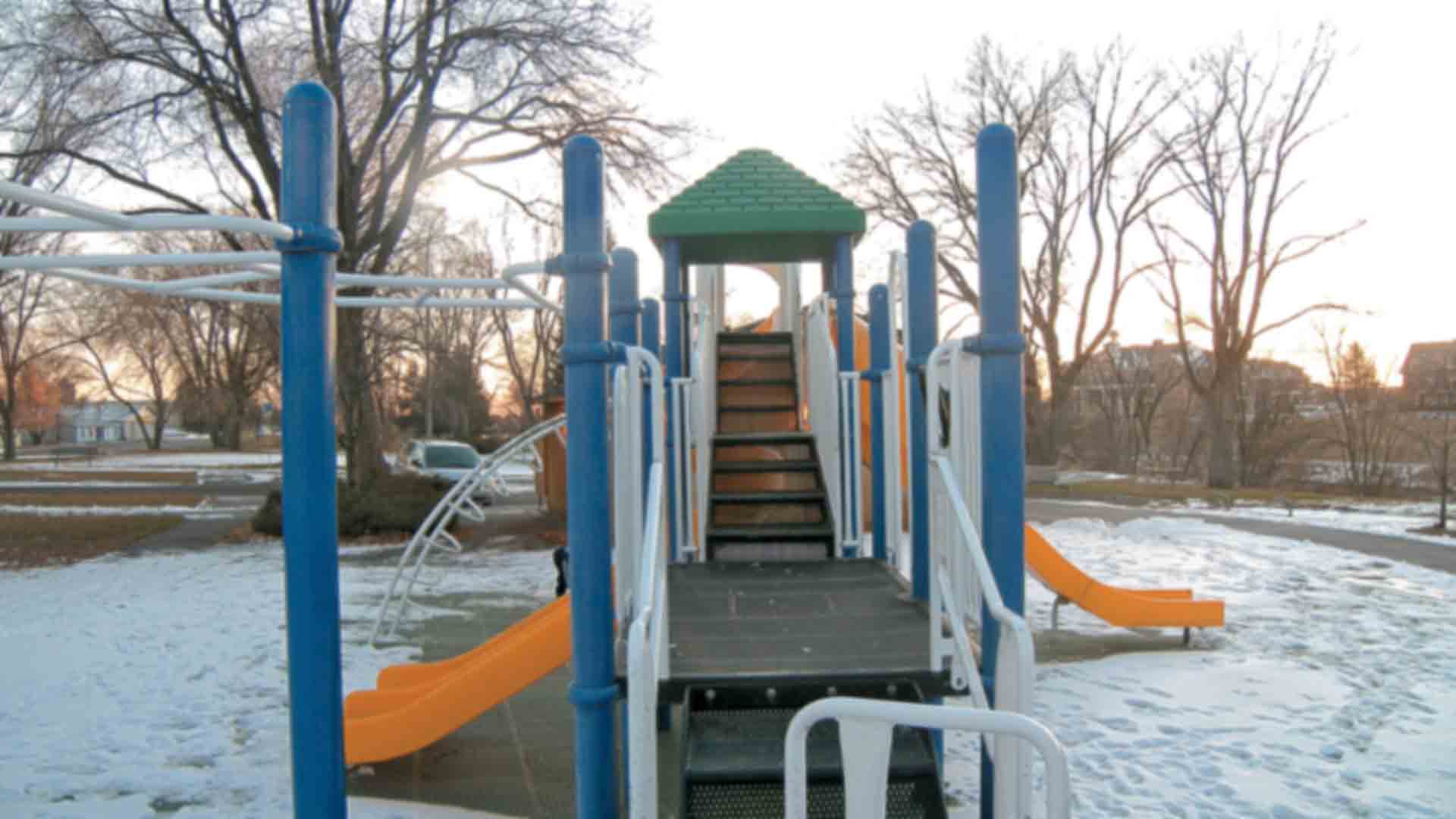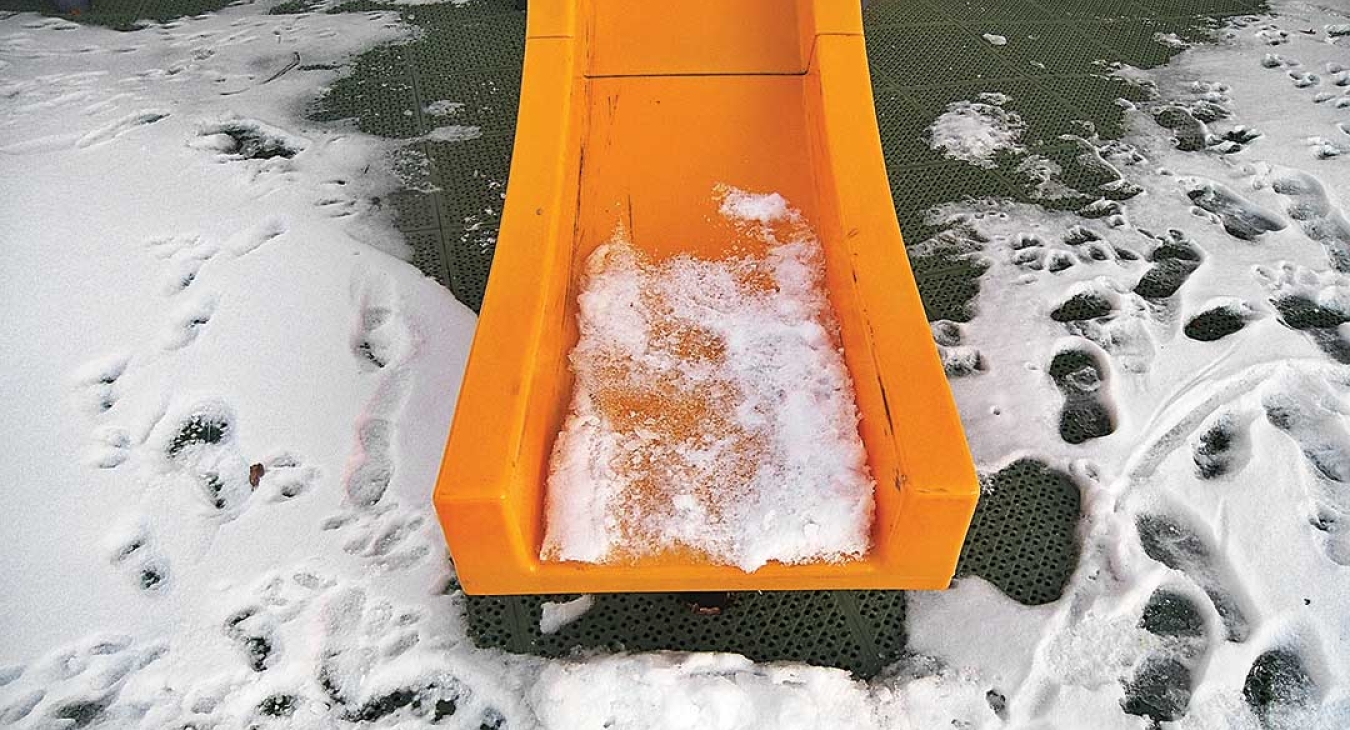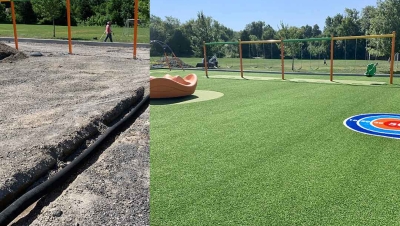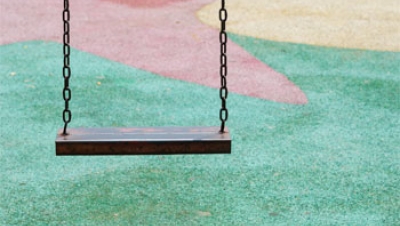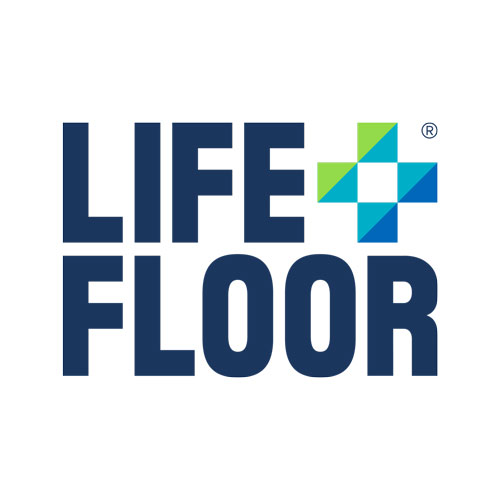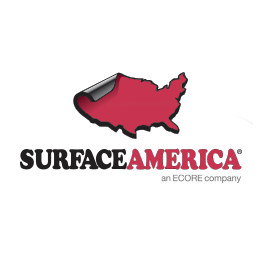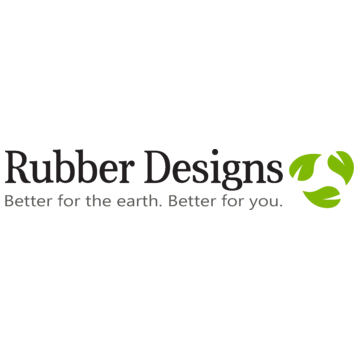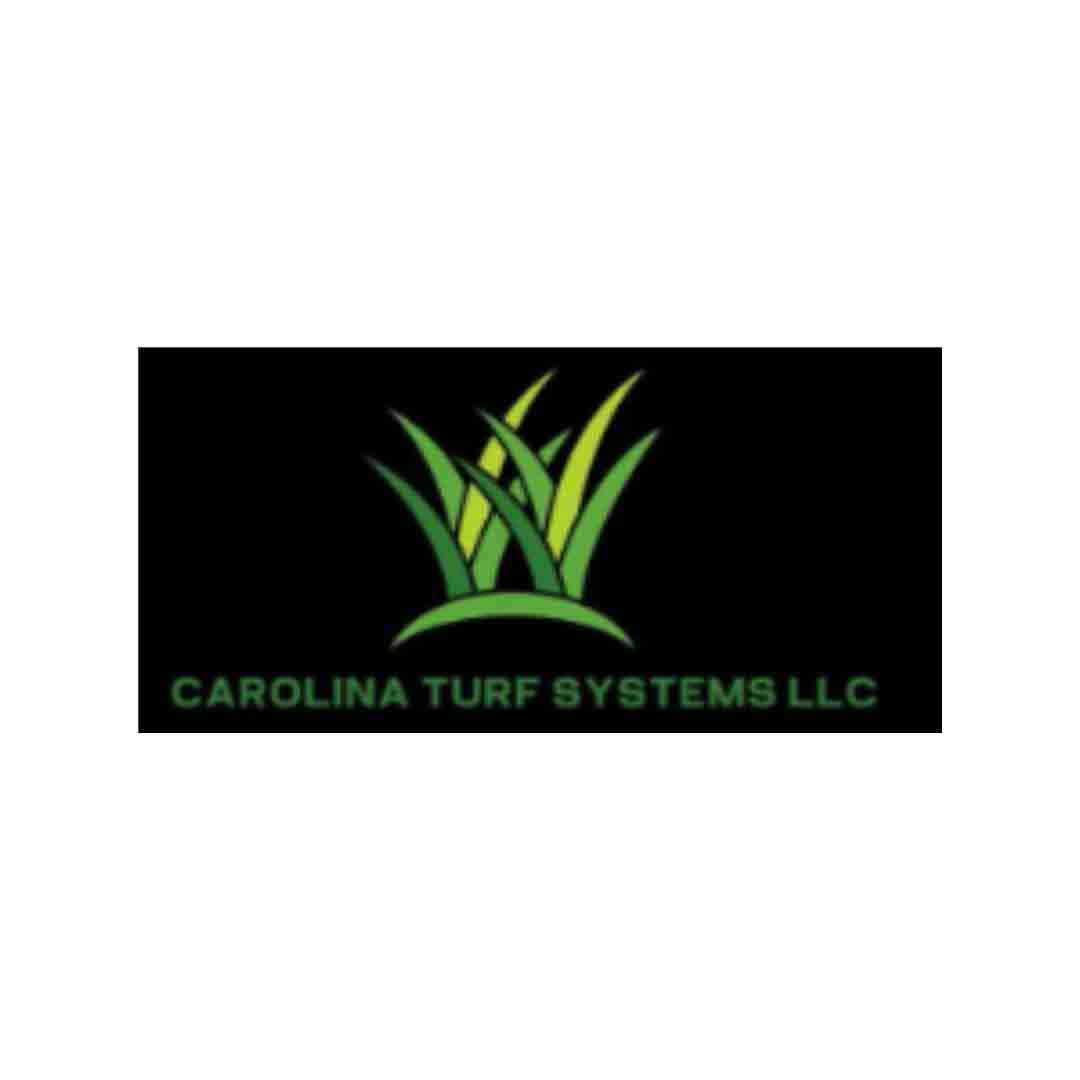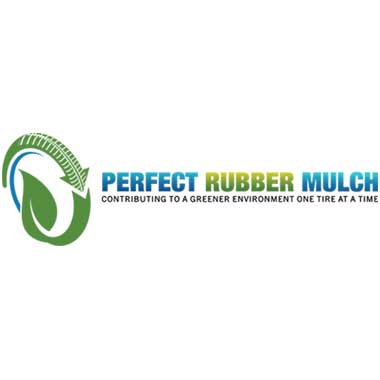The Chill Effect
Anything a city, town, municipality, school, daycare or any other entity that owns a playground used by the public can do to prevent injuries to a child is a good thing.
With more than 200,000 kids heading to emergency rooms after playground falls each year, it’s no secret that playgrounds need good equipment and suitable safety surfacing. A whopping three-quarters of all public playground injuries are sustained in falls.
Playgrounds that are found in colder climates can be at a bit of a disadvantage compared to those in warmer areas simply because Mother Nature can really hand out a beating to surfacing and equipment.
So the question is, what can be done to limit the effects of the abuse Mother Nature hands out? Will a routine maintenance program or regular visits to ascertain what’s happening at your playground improve the safety of playground equipment and its surfacing? It certainly can’t hurt.
Those who live in colder climates know harsh winter weather can sometimes lead to the deterioration of playground surfacing, making a playground fall more injurious. With the crush of winter, it’s a good idea to do frequent playground checks to make sure its surfacing is up to the challenges presented by wind, ice, and snow.
10 winter tips on what to watch for on playground surfaces
-
Winter Winds
With winter winds howling, loose fill materials like mulch or wood chips can sometimes be blown out of the playground area, eliminating its efficacy. Frequent routine checks of surface depth of loose fill materials are paramount, especially in blustery areas of the country. The proper depth depends on what type is utilized at the playground, so be sure to take ASTM International Standard F1292 into account as you check the levels. A depth of at least nine inches is a good rule of thumb, but 12 inches is better.
-
Deterioration
Both organic and inorganic loose fill materials can deteriorate after being subjected to the elements. According to the U.S. Consumer Product Safety Commission (CPSC) the freeze, thaw, refreeze cycle can damage a particle’s ability to reduce damage from a fall. Grading and raking the material and again periodically checking surfacing levels to ensure ASTM guidelines are best bets. Most manufacturers should be able to tell you what the guidelines are. If your surface is below standards, arrange to have it topped off or refilled as soon as possible. This is especially important for high traffic areas, such as those beneath swings and slides.
However, be aware that some companies (like wooden mulch obtained from garden nurseries) that provide loose fill materials are sometimes not familiar with playground industry standards, so it’s always a best bet to rely on playground safety inspectors recommendations. There are several organizations that offer these kinds of inspections, but Certified Playground Safety Inspectors with certification from National Parks and Recreation Association or the National Playground Safety Institute are an ideal choice. You can find a state-by-state listing of certified inspectors at the NRPA website at ipv.nrpa.org/CPSI_registry.
-
The Drain Gain
Making sure there is proper drainage will not only help your surface last the length of the winter, but will also keep the material from breaking down or losing coatings, thereby extending the life of the product. Twenty-five-year industry veteran Robert Heath, CEO of Fibar, a New York-based playground surfacing manufacturer and former chairman of ASTM Playground Surfacing Committee F08.63, calls for proper playground drainage.
“The surface should have been installed with a specific drainage system,” Heath said. “With an inadequate drainage system, water will hold in the surface and when the ground freezes it could change impact attenuation to a point where it won’t meet CPSC guidelines.”
Playgrounds sometimes lack drainage because of cost or misinformation, but really there should always be drainage systems in place.
If there is a drainage system in place there will be far less deleterious affects, he said.
-
When To Close Up Shop
As passionate play advocates, it’s difficult to say that yes, sometimes playgrounds should be closed. But Heath pointed out that with any type of playground surface—since they are all porous surfaces—depending on the weather; there may be times where the playground is situated where it’s frozen solid, making a playground fall that much more dicey.
-
Policies And Procedures
Heath recommends that playground owner/operators have a policy to post signs indicating a playground closure and a procedure for carrying out the closure.
“It’s a reverse analogy to a skating pond where ice is not thick enough for skating, you post signs when the playground ice is too thick,” he said. “Freezing rain is an immediate cause for closing the playground.”
-
Surface Recoat?
One question that often comes up in regard to poured-in-place surfacing is the concept of a maintenance coat of urethane. An incredibly popular coating for surfacing is aromatic urethane, which is used as a coating in playground surfaces. Many companies offer maintenance recoats to ensure that the surface is in good shape, a practice that is debated for its effectiveness. However, other companies, like Texas-based DuraPlay, use aliphatic urethane, a stronger, but more expensive urethane that lasts up to 10 years without maintenance, according to Darren Toomey, DuraPlay owner and operator for 24 years. Perhaps the biggest indicator of the durability of the surface, especially in the winter when there’s the risk of flaking, cracking and brittleness, is the initial installation. Toomey said it is imperative to have an experienced company/installation crew perform the initial installation of poured-in-place surfacing; otherwise there may be problems in the future. Poured-in-place surfacing is recommended to meet ASTM standard F2479.
-
Hard Pack
Gravel and sand in particular can become wet and, when combined with other materials like sand or dirt, can freeze together and reduce the effectiveness of the surface. This freezing can cause rigidity or even hard pack to form, which is a horrible condition for a surface situated under 7-foot-high playground equipment. Again, CPSC recommends grading and raking the area often to keep it from clotting together during all seasons of the year and in particular during cold winter months.
-
Rubber Tiles
Tiles similar to the surface pictured here, have a number of advantages, but in the winter it is possible that they can be damaged by frost. At the playground pictured, the tiles were noticeably less flexible and giving on a winter day than during summer months, but the impact attenuation overall is usually still consistent with guidelines. Some types of rubber tiles can curl with weather exposure, presenting a tripping hazard. Routine checking of the surfaces can make you aware of any problem areas that need addressed before an accident or issue arises, which, in light of liability, is very cost effective over the long run.
-
Standing Water?
Is it ever acceptable for there to be standing water at a playground? The resounding answer is no.
“They were too cheap and didn’t pay attention,” said Heath. “All major surfacing people have got drainage systems and if they don’t, they suffer consequences. There should never be standing water in a playground.” Not only does it make the playground unusable, but Heath said if there is standing water in the playground you should contact the original architect and engineer and have them remedy it immediately because it will cause the rapid deterioration of any surface. The deterioration in question is the actual shock-absorbing properties of the surface itself, making standing water a very expensive problem to fix and a hazard to kids.
-
Vigilance Is The Best Bet
As always, routine, preventative maintenance is the best way to go. Sometimes a playground surface can conceal hidden dangers, especially if there is snow involved. Needles, feces, glass and other nasty items can sometimes be present on playground surfaces and can cause harm to unsuspecting kids. Those routine checks can ensure that the playground surface is hazard-free. Also, being aware of weather conditions and responding in kind is ideal for keeping playground surfaces up to safety criteria. Being informed on all best practices for maintaining your playspace surfacing during the winter and other seasons is an effective way to continue providing crucial, safe play experiences to children.
Sources:
- U.S. Consumer Product Safety Commission - (800) 659-2772 or www.cpsc.gov
- ASTM International - www.astm.org
- Fibar - (800) 432-2721 or http://fibar.com
- DuraPlay (512) 847-2473 or www.duraplay.net
- CPSI Registry

